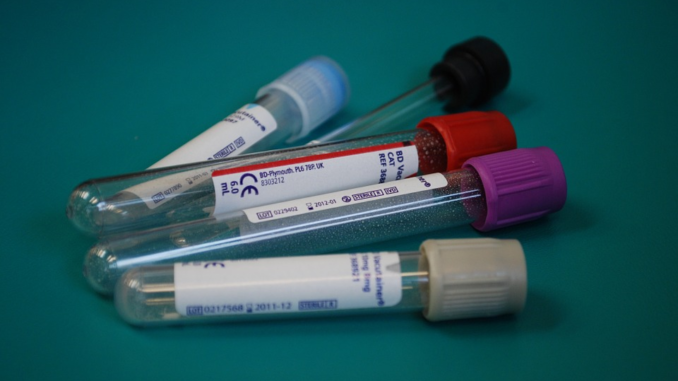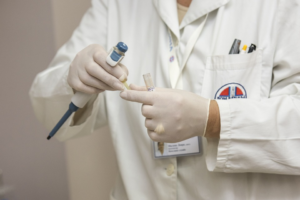
Your body produces proteins, Antibodies, in response to harmful substances called antigens. An Enzyme-Linked Immunosorbent Assay (ELISA) test may be used to diagnose: HIV, which causes AIDS.
The ELISA test is one of the many common antibody tests discovered in present time. Know more about the ELISA and its different types by reading the article below.
What is an ELISA?
From basic research to diagnostics, Enzyme-Linked Immunosorbent Assay (ELISA) is an antibody application extensively used in many settings.
Often devised in convenient easy to use kit formats, ELISA is the preferred method to determine the titer of antisera and purified antibodies. Moreover, for the quantitative assessment of an antigen in a sample, ELISA can also be successfully employed.
Enzyme-linked immunosorbent assay (ELISA) kits make it easier to use ELISAs for performing ligand-binding assays successfully or detecting molecules.
Along with chromogenic, fluorescent, or chemiluminescent substrates, many ELISA kits use the detection enzymes horseradish peroxidase (HRP) or alkaline phosphatase (AP).
An antigen must be immobilized on a solid surface and then complexed with an antibody that is linked to an enzyme in an ELISA.
In producing a measurable product, detection is accomplished by assessing the conjugated enzyme activity via incubation with a substrate. A highly specific antibody-antigen interaction is the most crucial element of the detection strategy.
How does it Work?
ELISA is a technique used to detect infectious agents or antibodies in a sample.
Antibodies are made in response to infection and so an antibody ELISA can indicate whether or not an animal has been in contact with a particular virus. By detecting it directly, an antigen ELISA can tell whether an animal is infected with a virus.
Meanwhile, antigens are stuck onto a plastic surface, a sample is added, and any antibodies for the disease we are testing for will bind to the antigens for an antibody ELISA.
Next, a second antibody with a marker is added, and a positive reaction is detected by the tag changing color when an appropriate substrate is attached.
The second antibody will not be able to stick, and there will be no color change if there are no antibodies in the sample.
Antibodies are bound to a plastic surface, a sample is added, and if antigens from the virus we are testing for are present, they will stick to the antibodies for an antigen ELISA. In the same way as the antibody ELISA, the test will proceed.
3 Types of ELISA
 Direct ELISA
Direct ELISA
The antigen is bound by passive adsorption to the solid phase, washed to remove any unbound molecules and then directly incubated with a conjugated antibody, it is the simplest configuration.
Following the incubation period and additional washing, a substrate is added to produce a signal that is allowed to develop.
After a particular time, the substrate reaction is stopped and the resulting signal quantified. It is handy to estimate antigen cross-reactivity and is commonly used for tittering conjugated secondary antibodies.
Indirect ELISA
In this system, first antigen binding and washing steps are the same as the direct method. The main difference, in this case, is the use of an unconjugated antibody to bind the immobilized antigen upon incubation at optimal temperature.
The remaining antigen-bound antibodies, following a washing step to remove unbound antibodies, are targeted by a conjugated secondary antibody that will generate the readout signal as described for direct ELISA.
This system has been widely applied in diagnostics because it allows a large number of samples to be screened with a single conjugated secondary antibody.
Sandwich ELISA
This assay requires a compatible antibody pair that recognizes different antigenic targets (epitopes) on the same antigen.
The capturing antibody, also known as the first antibody, is coated on the plate and used to immobilize the antigen upon binding during incubation with the sample.
A washing step removes free antigen, and then a detecting antibody is added to bind the captured antigen and enable subsequent detection. Sandwich ELISA is divided into two primary systems:
Direct Sandwich
This assay uses a conjugated detecting antibody to a fluorescence tag or an enzyme.
Signal detection, following incubation with the antibody-antigen complex immobilized on the plate well, is performed upon successive addition of substrate and stopping solution or as described before or appropriate excitation/emission of the fluorescent tag.
Indirect Sandwich
This assay uses either an unconjugated or biotinylated detection antibody that once is bound to the antibody-antigen complex on the well is subsequently detected by either an anti-species antibody or streptavidin conjugated to an enzyme or fluorescent tag.
Takeaway
Antibody testing is usually done on a blood sample, often using an enzyme-linked assay called an EIA or ELISA. A person’s serum is allowed to react with virus proteins that have been produced in the laboratory in this test.
ELISA, as one of the most common antibody tests, is essential. Although you are not forced to take the test, it is still recommended to make sure that you are free from harmful viruses.

Be the first to comment